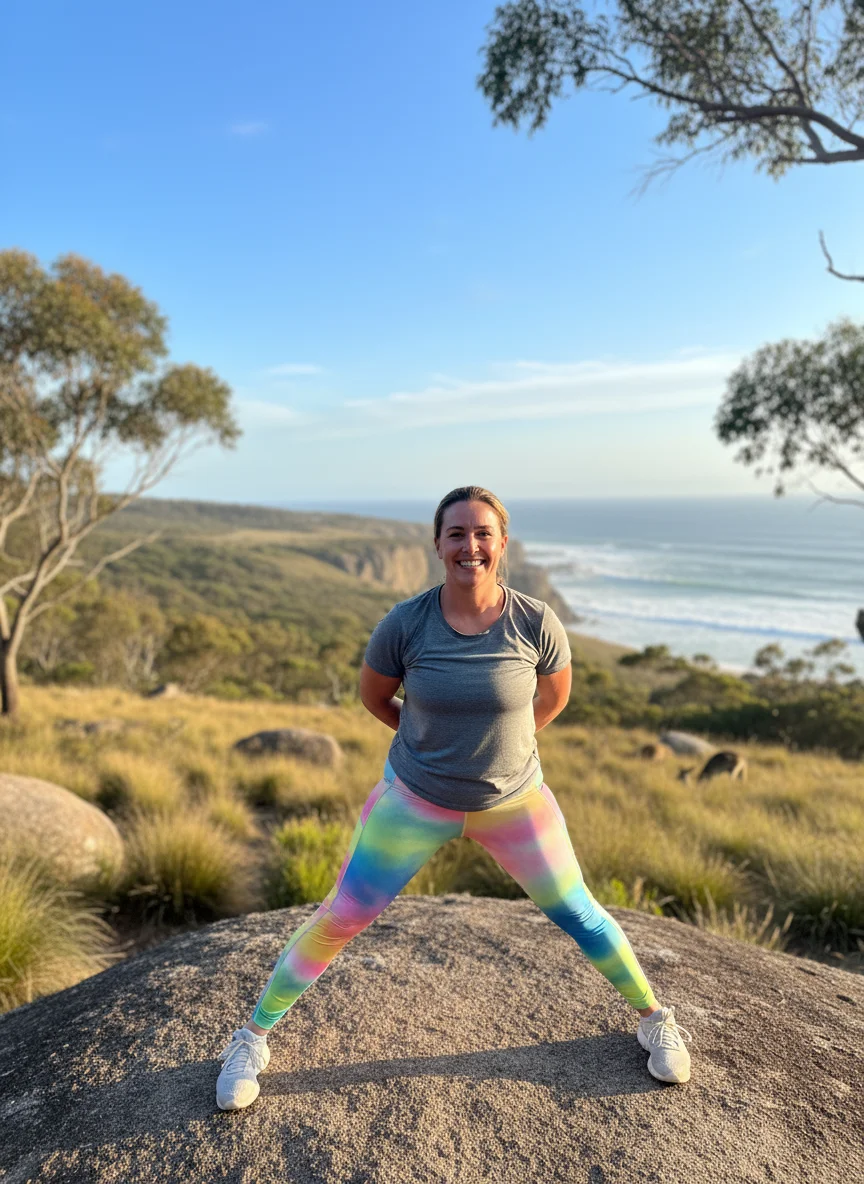Your Complete 12-Week Recovery Roadmap
Recovery from gastric sleeve surgery is a journey, not a destination. Each week brings new milestones, challenges, and victories. This comprehensive guide walks you through every single week for 12 weeks—exactly what to expect: pain, diet, activity, emotions, and complications. Bookmark this page—you'll return to it throughout your recovery.
📋 Based on OSSANZ Clinical Guidelines
This recovery timeline follows protocols established by the Obesity Surgery Society of Australia and New Zealand (OSSANZ) and Royal Australasian College of Surgeons. Individual timelines may vary—always follow YOUR surgeon's specific instructions.
What You'll Learn in This Guide
📅 Daily Breakdown of Week 1
Hour-by-hour guide through the hardest week
🍽️ Week-by-Week Diet Progression
What you can eat at each stage
💪 Activity & Exercise Timeline
When you can return to exercise and work
🚨 When to Worry vs. Relax
Clear warning signs and normal symptoms
😊 Emotional Changes by Stage
Mental health journey and support
📊 Weight Loss Expectations
Realistic ranges for each week
12-Week Recovery at a Glance
Here's your complete recovery timeline in one visual snapshot:
💧 WEEK 1: Hospital & Initial Recovery
- Hospital: Days 1-2
- Diet: Clear liquids only
- Activity: Walking only, no lifting
- Pain: Moderate (6-8/10, managed with meds)
- Weight Loss: 2-5kg (mostly water)
- Milestone: Going home, keeping fluids down
🥤 WEEKS 2-3: Full Liquids & Adapting
- Diet: Protein shakes, smooth soups
- Activity: Short walks, light housework
- Pain: Mild to moderate (1-3/10)
- Energy: Low, fatigue common
- Weight Loss: 3-5kg additional
- Milestone: Hit protein targets, walk 20+ min
🍲 WEEKS 4-6: Pureed & Soft Foods
- Diet: Blended proteins, soft foods
- Activity: Longer walks, light exercise
- Pain: Minimal to none
- Energy: Improving steadily
- Weight Loss: 3-6kg additional
- Milestone: Tolerate solid proteins, 60-80g daily
🍽️ WEEKS 7-8: Soft to Regular Foods
- Diet: Most foods tolerated (small portions)
- Activity: Return to most activities, gym OK
- Pain: None (contact surgeon if any)
- Energy: Near normal
- Weight Loss: 2-4kg additional
- Milestone: Return to work (desk job), normal routine
🎯 WEEKS 9-12: New Normal Established
- Diet: Regular foods, protein-first habit
- Activity: Full exercise program
- Pain: None
- Energy: Excellent
- Weight Loss: 15-25kg total (varies by starting weight)
- Milestone: New eating habits solidified
💧 WEEK 1: Hospital Stay & First Days Home

The Reality: Week 1 is the hardest and most critical week. Your body is healing from major surgery, and you're learning to live with your new stomach. Most patients say, "If I can survive Week 1, I can do anything."
💡 Key Focus for Week 1
Your ONLY job this week: Stay hydrated and walk gently. That's it. Forget protein goals, forget exercise. Just sip water constantly and walk to the bathroom and back. Everything else can wait.
Day 1: Surgery Day & Recovery Room
What happens:
- ⏰ Surgery: 2-3 hours under general anesthesia
- 🏥 Recovery room: 1-2 hours waking up, feeling groggy
- 🛏️ Hospital room: Transferred once vitals are stable
- 💧 Clear liquids: Small sips begin (if tolerated)
- 🚶 Walking: Nurses encourage walking the same day
Pain Level: 6-8 out of 10
- Incision site pain
- Gas pain in shoulders (from laparoscopy)
- Nausea possible
✅ What You WILL Be Able to Do:
- Sit up in bed (with assistance)
- Use bathroom (nurse assists first time)
- Walk short distances (to bathroom, down hallway)
- Sip clear fluids (30ml every 30 minutes)
❌ What You WON'T Be Able to Do:
- Lift anything over 2kg
- Bend at waist
- Sleep on stomach
- Drink quickly or large amounts
Emotional state: Foggy, overwhelmed, questioning decision. This is completely normal! These feelings will pass.
Day 2: First Full Day Post-Surgery
What happens:
- 🏥 Still in hospital: Most patients stay night 2
- 💊 Medication: Oral pain meds begin (replacing IV)
- 🚶 Walking: Encouraged every 2-3 hours (helps with gas pain)
- 💧 Hydration: Goal 500ml (very difficult to achieve!)
- 🩺 Monitoring: Nurse checks vitals, inspects incisions
Pain Level: 5-7 out of 10
- Incision pain improving slightly
- Gas pain may worsen (trapped air from surgery)
- Nausea still common
Diet:
- Clear liquids: water, broth, sugar-free jelly
- Sip slowly (30ml over 15-20 minutes)
- Total intake goal: 500ml (most patients struggle to reach this—that's OK!)
Activity:
- Walk 5-10 minutes, 4-6 times throughout the day
- Sitting in chair for "meals"
- Light stretching in bed
Day 3: Going Home (For Most Patients)
What happens:
- 🏠 Discharge: Most patients go home Day 2-3
- 📋 Instructions: Written discharge plan from surgeon
- 💊 Medications: Pain meds, anti-nausea, PPI (proton pump inhibitor) prescribed
- 📅 Follow-up: Book 1-week post-op appointment before leaving
- 🚗 Transport: Need someone to drive you home
Pain Level: 4-6 out of 10
Manageable with oral pain medication. Moving still uncomfortable but improving.
📋 Going Home Checklist:
- ✅ Pain medication prescription filled
- ✅ Anti-nausea medication on hand
- ✅ Protein shakes/clear liquids stocked at home
- ✅ Someone to help you for next 24-48 hours
- ✅ Pillow for car ride (protect incisions from seatbelt)
- ✅ Understand warning signs (when to call surgeon)
Days 4-7: First Week at Home
Daily routine:
- 💧 Hydration: Focus on reaching 1-1.5L daily (work up gradually)
- 🚶 Walking: 5-10 minutes, 4-6 times daily (prevents blood clots)
- 💊 Medication: Pain meds as needed (most wean off by Day 7)
- 😴 Sleep: 8-10 hours at night + daytime naps
- Support: Lean heavily on family/friends—this is the hard part
Pain Level: 3-5 out of 10 (decreasing daily)
- Day 4-5: Noticeable improvement
- Day 6-7: Most patients off pain meds or using minimally
Physical changes you'll notice:
- Incisions scabbing over
- Bruising around incision sites (normal)
- Bloated stomach (gas and swelling)
- Fatigue (overwhelming tiredness—your body is healing!)
- Lightheadedness when standing (low blood pressure from low calories)
⚠️ Common Challenges Week 1:
- 😰 Anxiety about eating/drinking: "Am I drinking enough?" Trust the process—your body can handle low intake this week.
- 😔 Buyer's remorse: "Did I make the right choice?" Yes, you did. This feeling passes by Week 2-3.
- 😫 Extreme fatigue: Your body is healing from major surgery on very few calories. Rest is recovery.
- 🤢 Nausea: Anti-nausea meds help. Sip slower, try different temperatures (ice-cold vs. room temp).
- 😣 Gas pain: Worst days 2-4, improves dramatically after. Walk, walk, walk—it helps!
🚨 When to Call Surgeon (Week 1):
- 🚨 Fever over 38°C
- 🚨 Severe pain not controlled by medication
- 🚨 Persistent vomiting (can't keep liquids down)
- 🚨 Incision signs: Redness, swelling, discharge, or opening
- 🚨 Chest pain or difficulty breathing
- 🚨 Leg pain or swelling (DVT risk)
- 🚨 Dark urine or no urination for 8+ hours
Weight loss Week 1: 2-5kg (mostly water weight)
Emotional journey:
- Day 1-3: Shock, overwhelm, "What did I do?"
- Day 4-5: Slight improvement, still questioning
- Day 6-7: Light at end of tunnel, "I can do this!"
✅ Week 1 Milestone Achieved:
You made it through the hardest week! You're keeping liquids down, walking daily, and your body is healing beautifully. From here, each day gets easier.
🥤 WEEKS 2-3: Full Liquids & Building Strength

The Turning Point: Weeks 2-3 are when most patients "turn a corner." You're introducing protein, energy starts returning, and you feel like a human again. This is a major milestone!
💡 Key Focus for Weeks 2-3
Protein is your new best friend. Hit 60-80g daily using protein shakes and smooth soups. This is when your body starts rebuilding and healing accelerates dramatically.
Week 2: Protein Introduction
Major change: Full liquids begin!
✅ Foods You Can Now Have:
- Protein shakes (20-30g protein each)
- Smooth soups (blended, no chunks)
- Skim milk
- Greek yogurt (thinned with milk)
Pain Level: 1-3 out of 10 (minimal pain—most patients off pain meds)
Daily routine:
- 💪 Protein: Target 60-80g daily (use shakes to hit this goal)
- 💧 Fluids: 1.5L daily minimum
- 🚶 Walking: 15-20 minutes, 2-3 times daily
- 😴 Energy: Still low, naps common (but improving!)
Diet specifics:
- 🥤 6-8 small "meals" per day
- Each "meal": 60-120ml protein shake or soup
- Sip slowly over 20-30 minutes
- Wait 30 minutes before/after meals to drink water
⚠️ Common Challenge: Protein Shake Aversion
The Problem: Many patients develop taste aversion to protein shakes by Week 2.
The Solution: Try 5-6 different brands/flavors. Freeze protein shakes for "ice cream" texture. Try clear protein drinks (Isopure). Mix with coffee for a mocha shake. Warm soups provide comfort and variety.
Weight loss Week 2: 2-3kg additional (5-8kg total)
Week 3: Establishing Routine
Pain Level: 0-2 out of 10 (should be pain-free—call surgeon if experiencing pain)
Major milestone: First surgeon follow-up appointment
- Incision check ✓
- Weight check ✓
- Diet progression approval ✓
- Address any concerns ✓
Activity progression:
- Walking: 30+ minutes daily
- Light strength training: OK (5-10 min, bodyweight only)
- Swimming: NO (wait until incisions fully healed, Week 6+)
- Return to work: Most desk jobs by Week 3
Emotional state:
- Excitement about visible weight loss
- More confident in ability to succeed
- Still some fatigue-related frustration
Weight loss Week 3: 1-2kg additional (8-10kg total Weeks 1-3)
💬 Common Questions Weeks 2-3:
- "When will I have energy?" → Weeks 4-6 see significant improvement as you eat more protein and calories.
- "Is it normal to not feel hungry?" → YES! Ghrelin (hunger hormone) was removed with 80% of your stomach.
- "When can I eat real food?" → Week 4 begins pureed stage (real food, just blended).
🍲 WEEKS 4-6: Pureed & Soft Foods (Exciting Milestone!)

Game Changer: This is when recovery gets exciting! Real food returns (blended), energy improves dramatically, and you start feeling "normal" again. Most patients say Week 4-6 is when they finally feel like themselves.
💡 Key Focus for Weeks 4-6
Protein-first eating becomes a habit. Always eat protein first, then vegetables if room. This habit you build now determines your long-term success.
Week 4: Pureed Foods Begin
Major change: Solid nutrition in blended form!
✅ Foods You Can Now Have:
- Pureed chicken, fish, lean beef
- Mashed vegetables
- Cottage cheese, ricotta
- Pureed beans, lentils
- Mashed avocado
Daily routine:
- 🍗 5-6 small meals daily
- 🥄 Portion: 2-4 tablespoons per meal (tiny!)
- ⏱️ Duration: 20-30 minutes per meal (eat slowly)
- 💪 Protein: 60-80g target (easier now with solid proteins)
Activity:
- Walking: 30-40 minutes daily
- Light weights: 10-15 minutes (2-5kg max)
- Cardio: Light cycling, elliptical OK
- Swimming: Wait until Week 6 (incisions fully healed)
🎉 Physical Changes Week 4:
ENERGY RETURNS! This is the most noticeable improvement. You'll actually want to do things again. Weight loss is accelerating, and clothes are getting baggy.
Weight loss Weeks 4-6: 3-6kg additional (11-16kg total Weeks 1-6)
Weeks 5-6: Soft Foods Introduction
Major change: Soft proteins introduced
✅ Foods You Can Now Have:
- Soft scrambled eggs
- Soft fish (baked, not fried)
- Ground meats (extra lean, very moist)
- Tofu, soft cheeses
- Canned tuna/salmon (mixed with Greek yogurt)
Diet specifics:
- Portion: 1/4 - 1/2 cup per meal
- Still eating 5-6 times daily
- Protein goal: 60-80g easily achievable now
- Chew thoroughly (20-30 chews per bite)
🩺 6-Week Post-Op Appointment
This is a major check-in:
- Weight check (expect 8-15kg loss)
- Blood work (check vitamins, protein levels)
- Diet progression approved
- Exercise clearance for full program
🍽️ WEEKS 7-8: Transition to Regular Foods

Almost There: Life is starting to feel normal again! You're eating real food, exercising regularly, and establishing lifelong habits. This is where your new lifestyle solidifies.
Weeks 7-8: Regular Foods (With Modifications)
Major change: Most foods tolerated!
✅ Foods You Can Now Have:
- Regular proteins (chicken, fish, lean beef)
- Most vegetables
- Small amounts of fruits
- Whole grains (limited—they fill you quickly)
Diet specifics:
- Portion: 1/2 - 1 cup per meal
- 4-5 meals daily (transitioning from 6)
- Protein: 60-100g daily
- Chew thoroughly (20-30 chews per bite—critical!)
❌ Foods Still Avoiding:
- High-sugar foods (dumping syndrome risk)
- Carbonated drinks (forever!)
- Tough red meat (too difficult to chew)
- Bread, pasta (limited—fills you quickly, low nutrition)
Activity:
- Full exercise program established
- Cardio: 30-45 minutes, 5x weekly
- Weights: 30 minutes, 3-4x weekly
- Sports: Most activities OK (listen to your body)
Milestone: Return to work (physical jobs) — Most patients able to return by Week 6-8, depending on job demands
Weight loss Weeks 7-8: 2-4kg additional (13-20kg total Weeks 1-8)
🎯 WEEKS 9-12: New Normal & Habit Formation
You Did It: Final phase of early recovery. Habits are forming, weight loss continues, and you're living your new life. The habits you build now determine your long-term success.
Weeks 9-12: Solidifying Success
Daily life:
- Eating 3-5 small meals daily
- Protein-first eating is automatic habit
- Regular exercise routine established
- No pain or discomfort
- Energy levels excellent
Diet:
- Protein: 70-100g daily
- Portion: 1/2 - 1 cup per meal
- Eating out possible (with planning)
- All whole foods tolerated
Activity:
- Exercise: Part of daily routine (no longer a chore!)
- Any activity you enjoy
- Building muscle, losing fat
- Fitness improving rapidly
💪 Physical Changes Weeks 9-12:
- 15-25kg weight loss total (varies by starting weight)
- Body shape changing noticeably
- Needing new wardrobe
- Health markers improving dramatically (blood pressure, diabetes, cholesterol)
🩺 3-Month Milestone Appointment
Major check-in to assess progress:
- Weight loss assessment
- Blood work (vitamin levels, protein, iron)
- Diet and exercise review
- Mental health check-in
Weight loss Weeks 9-12: 3-5kg additional (18-25kg total Weeks 1-12)
Recovery Comparison Table
Here's a quick visual comparison of your 12-week recovery journey:
| Week | Diet | Activity | Pain | Energy | Weight Loss |
|---|---|---|---|---|---|
| 1 | Clear liquids | Walking only | High (6-8/10) | Very low | 2-5kg |
| 2-3 | Full liquids | Light walking | Low (1-3/10) | Low | 5-10kg total |
| 4-6 | Pureed/soft | Moderate exercise | None | Improving | 8-16kg total |
| 7-8 | Regular foods | Full exercise | None | Normal | 10-20kg total |
| 9-12 | All foods | Any activity | None | Excellent | 15-25kg total |
Activity & Exercise Progression Timeline
Here's exactly when you can resume different activities:
Week 1: Walking Only
- Walking: 5-10 min, 4-6x daily
- NO lifting over 2kg
- NO gym, NO sports
Weeks 2-3: Light Activity
- Walking: 20-30 min daily
- Light housework OK
- Still no lifting over 5kg
Weeks 4-6: Moderate Exercise
- Walking: 30-60 min daily
- Light weights: 2-5kg, bodyweight exercises
- Cycling, elliptical OK
- Swimming: Week 6+ only
Weeks 7-8: Full Cardio
- Full cardio: 30-45 min, 5x weekly
- Moderate weights: 5-10kg
- Most sports OK (no contact)
- Group fitness classes OK
Weeks 9-12: Any Exercise
- Any exercise you enjoy
- Heavier weights: 10-20kg (gradual progression)
- Running OK (if no joint pain)
- Contact sports: Get surgeon clearance first
💡 Exercise Tips for Success:
- Start slow, build gradually — Rushing back to exercise increases injury risk
- Protein before/after workouts — Helps with muscle recovery
- Stay hydrated — Drink 500ml 1-2 hours before exercise
- Consider hiring a trainer familiar with bariatric restrictions
Emotional Recovery Timeline
Your mental health journey is just as important as your physical recovery:
Week 1: Overwhelm, regret feelings, "What did I do?!" → This is normal! Will pass by Week 2-3.
Weeks 2-3: Cautious optimism, still questioning, fatigue makes everything harder
Weeks 4-6: Excitement building, seeing visible results, energy returning = mood improving dramatically
Weeks 7-8: Confidence growing, pride in accomplishments, new challenge: Body image adjustment
Weeks 9-12: Settling into new normal, excitement about future, managing emotional triggers
💚 Mental Health Support Resources:
- Join a bariatric support group (online or in-person)
- See a psychologist if struggling emotionally
- Talk to your surgeon about any concerns
- Connect with other patients online (Facebook groups are active)
Complications: When to Worry vs. When to Relax
✅ Normal Symptoms (DON'T Worry):
- ✅ Fatigue (Weeks 1-6) — Body healing on low calories
- ✅ Nausea with eating (if occasional) — Eating too fast or too much
- ✅ Constipation — Very common (low food intake)
- ✅ Hair thinning (Month 3-6) — Temporary, will regrow
- ✅ Mood swings — Hormonal changes from rapid fat loss
- ✅ Bruising around incisions — Normal healing
- ✅ Difficulty reaching water goals — Takes practice, gets easier
⚠️ Call Surgeon SAME DAY If:
- 🚨 Persistent vomiting (can't keep liquids down)
- 🚨 Severe pain (not controlled by medication)
- 🚨 Fever over 38°C
- 🚨 Incision: Redness, swelling, discharge, or opening
- 🚨 Dark urine, no urination 8+ hours
- 🚨 Severe weakness, dizziness (dehydration)
🚨🚨 Go to ER IMMEDIATELY If:
- 🚨🚨 Chest pain
- 🚨🚨 Difficulty breathing
- 🚨🚨 Leg swelling + pain (DVT risk)
- 🚨🚨 Vomiting blood
- 🚨🚨 Black tarry stools (internal bleeding)
Frequently Asked Questions
How long does gastric sleeve recovery take?
Most gastric sleeve patients return to light activities in 1-2 weeks, full activities in 6-8 weeks. Complete healing takes 6 weeks, though you'll feel significantly better by Week 4. Timeline varies by individual, job type, and adherence to post-op guidelines.
What is the hardest week after gastric sleeve surgery?
Week 1 is the hardest, particularly Days 2-4. Pain is highest, energy is lowest, and you're learning to manage your new stomach. Most patients report significant improvement by Day 7 and feel they've "turned a corner" by Week 2.
When can I return to work after gastric sleeve?
Desk jobs: 2-3 weeks. Physical jobs: 4-6 weeks. It depends on your job's physical demands, your recovery speed, and surgeon's clearance. Many patients return part-time at Week 2 before resuming full-time by Week 3-4.
How much weight will I lose in the first month after gastric sleeve?
Most patients lose 8-15kg in the first month after gastric sleeve surgery. Loss is fastest in Week 1 (water weight), then 1-2kg per week through Month 1. Individual results vary based on starting weight, adherence to diet, and activity level.
Is it normal to feel exhausted after gastric sleeve?
Yes, extreme fatigue is normal for Weeks 1-6 after gastric sleeve. Your body is healing from major surgery while consuming very few calories. Energy improves significantly by Week 4 and returns to near-normal by Week 6-8. Protein intake, hydration, and gentle walking help.
When can I exercise after gastric sleeve surgery?
Walking can begin Day 1 post-surgery. Light cardio (cycling, elliptical) can begin Week 4. Full exercise including weights can begin Week 6-8 with surgeon clearance. Always start gradually and increase intensity slowly over 3 months.
What are signs of complications after gastric sleeve?
Warning signs include: Persistent vomiting, severe pain not controlled by medication, fever over 38°C, incision redness/swelling/discharge, dark urine or no urination for 8+ hours, chest pain, or difficulty breathing. Contact your surgeon immediately if you experience any of these symptoms.
How long until I can eat normal food after gastric sleeve?
Regular foods typically begin Week 8 post-surgery. Diet progresses: Week 1 (clear liquids), Weeks 2-3 (full liquids), Weeks 4-6 (pureed/soft foods), Week 8+ (regular foods). Always follow your surgeon's specific timeline, which may vary slightly.
Ready for Your Gastric Sleeve Journey?
Recovery from gastric sleeve surgery is challenging but manageable. With this week-by-week guide, you know exactly what to expect and how to prepare. Bookmark this page and return to it throughout your recovery.
📚 Related Articles:
- Learn About Gastric Sleeve Surgery — Procedure overview and benefits
- Complete Diet Stages Guide — Detailed nutrition plan for all 5 stages
- Gastric Sleeve Cost Australia 2025 — Pricing and financing options
Related Recovery Resources
Choose the Right Surgeon for Your Recovery
Your recovery starts with choosing an experienced bariatric surgeon. Browse our directory of AHPRA-registered specialists.
Browse Surgeons